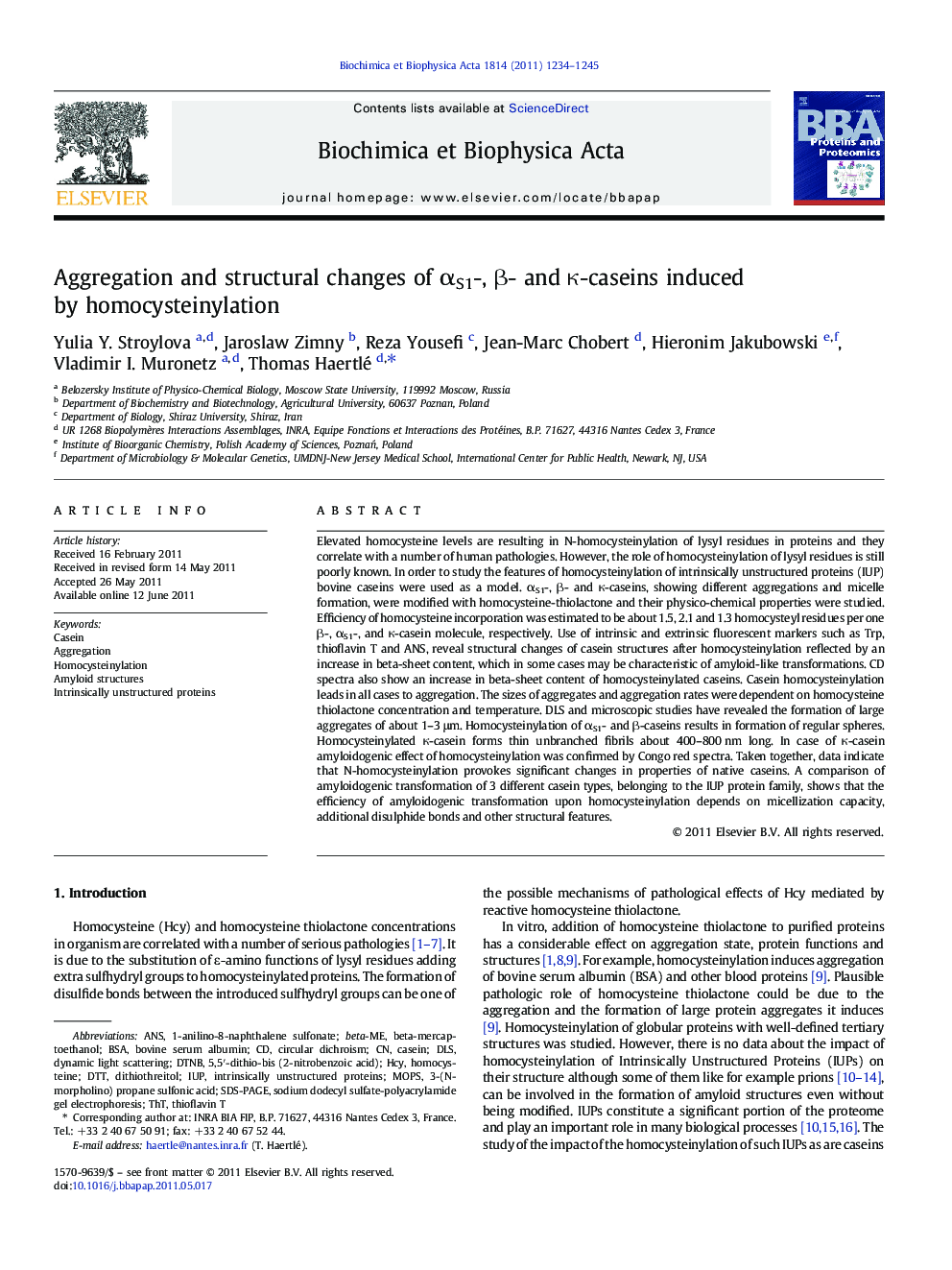| کد مقاله | کد نشریه | سال انتشار | مقاله انگلیسی | نسخه تمام متن |
|---|---|---|---|---|
| 1178737 | 962719 | 2011 | 12 صفحه PDF | دانلود رایگان |

Elevated homocysteine levels are resulting in N-homocysteinylation of lysyl residues in proteins and they correlate with a number of human pathologies. However, the role of homocysteinylation of lysyl residues is still poorly known. In order to study the features of homocysteinylation of intrinsically unstructured proteins (IUP) bovine caseins were used as a model. αS1-, β- and κ-caseins, showing different aggregations and micelle formation, were modified with homocysteine-thiolactone and their physico-chemical properties were studied. Efficiency of homocysteine incorporation was estimated to be about 1.5, 2.1 and 1.3 homocysteyl residues per one β-, αS1-, and κ-casein molecule, respectively. Use of intrinsic and extrinsic fluorescent markers such as Trp, thioflavin T and ANS, reveal structural changes of casein structures after homocysteinylation reflected by an increase in beta-sheet content, which in some cases may be characteristic of amyloid-like transformations. CD spectra also show an increase in beta-sheet content of homocysteinylated caseins. Casein homocysteinylation leads in all cases to aggregation. The sizes of aggregates and aggregation rates were dependent on homocysteine thiolactone concentration and temperature. DLS and microscopic studies have revealed the formation of large aggregates of about 1–3 μm. Homocysteinylation of αS1- and β-caseins results in formation of regular spheres. Homocysteinylated κ-casein forms thin unbranched fibrils about 400–800 nm long. In case of κ-casein amyloidogenic effect of homocysteinylation was confirmed by Congo red spectra. Taken together, data indicate that N-homocysteinylation provokes significant changes in properties of native caseins. A comparison of amyloidogenic transformation of 3 different casein types, belonging to the IUP protein family, shows that the efficiency of amyloidogenic transformation upon homocysteinylation depends on micellization capacity, additional disulphide bonds and other structural features.
► We report unknown previously modifications of bovine caseins potentially relevant in their structural transformations.
► We consider that this report could help in the identification of one of possible biological roles of N-Hcy lactone as inducer of amyloid formation.
Journal: Biochimica et Biophysica Acta (BBA) - Proteins and Proteomics - Volume 1814, Issue 10, October 2011, Pages 1234–1245